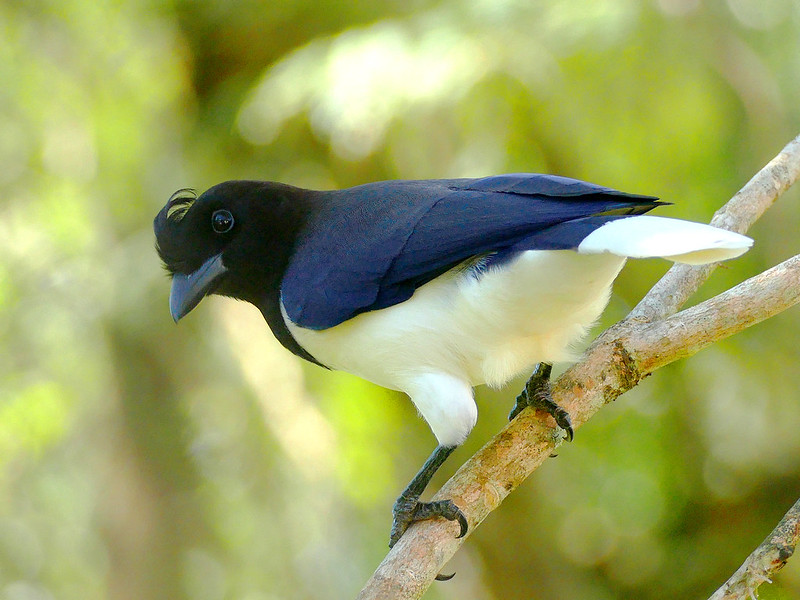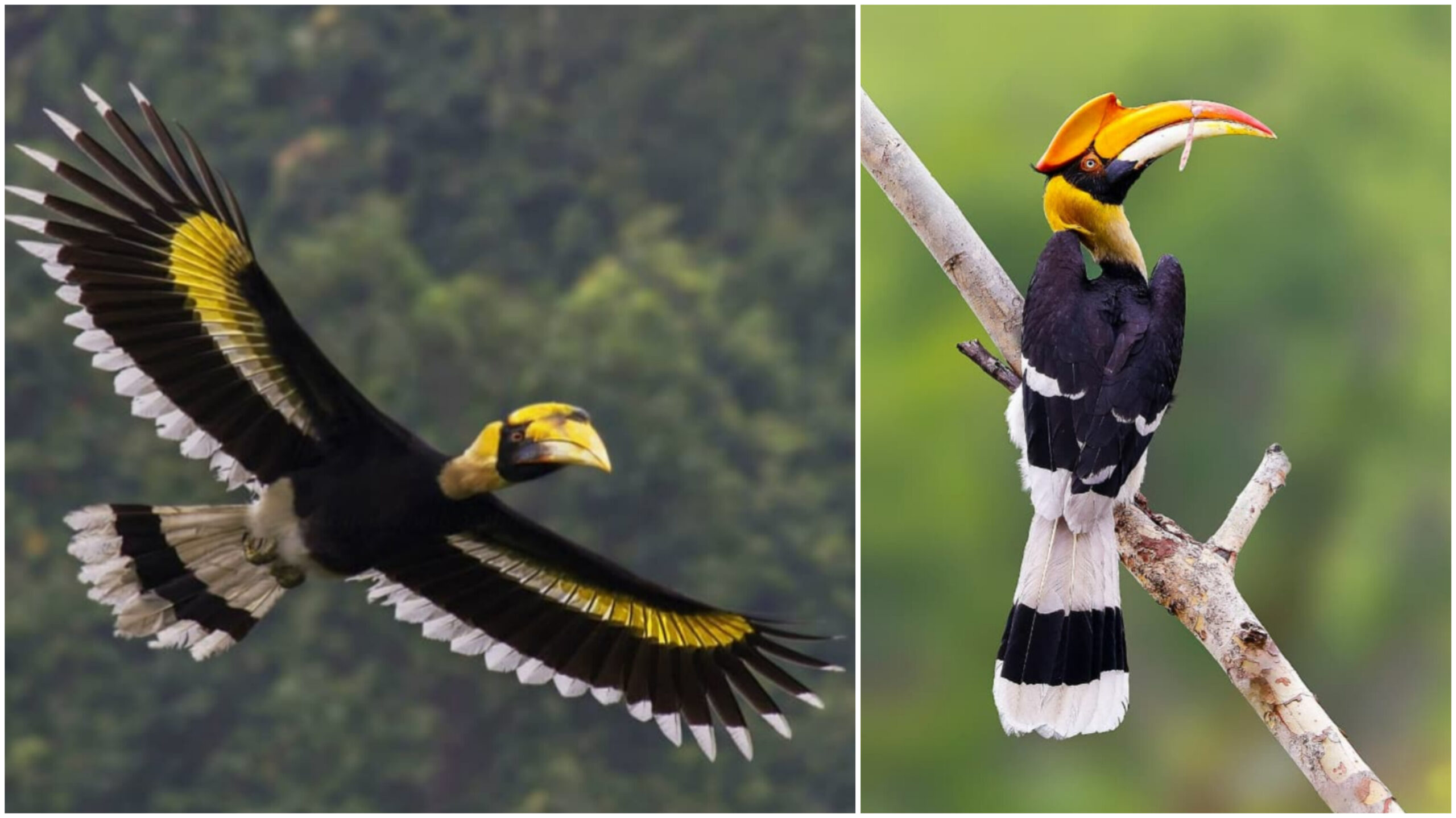A Highly Handsome, Rather Noisy, Savanna Loving Bird Whose Look Is Topped Off By A Very Prominent, Recurved, Erect, Forelock!!!

A large, rather noisy, savanna-loving, bird who sports a highly prominent curly forelock!
Meet Curl-crested Jay

Photo Courtesy of Egon Fink / CC BY 2.0
The curl-crested jay (Cyanocorax cristatellus) is a South American Jay with a black face, chin, cheeks, and chest, with the nape, and sides of the neck being a brown-black shade. On the top of the head sits a long, recurved, black crest that always stands erect. Upperparts, back, and rump are bluish to violet, but the upper mantle area is mostly a reddish-brown. Upper wings are cyan-blue, however, primaries have blue outer margins and black inner margins. These birds have a relatively short tail which is half violet blue and half white. The lower breast, belly, and rump are white. Underwing coverts are white which contrast nicely with darker flight feathers. The bill is black, the eyes dark brown and the legs and feet black.

Photo Courtesy of Egon Fink / CC BY 2.0
Males and females both look very similar.
The juvenile is duller when compared with adults, with brownish-tipped wing-coverts and the terminal third of the tail a washed mauve. Their crests are shorter and less curved.

Photo Courtesy of Egon Fink / CC BY 2.0
Curl-crested jays are native to the cerrados of central and southern and the caatinga of northeastern Brazil. In the southeast Amazon Basin, curl-crested jay ranges into the upstream headwater regions adjacent to the northwestern cerrado. In the west, the extreme headwaters of the west-flowing Guaporé River on the Brazil-Bolivia are a home.

For the southeast Amazon, the north-flowing rivers that limit the range are the Tapajós on the west, the Xingu River, then the adjacent drainage to the east, the Araguaia-Tocantins River system. The range continues easterly and southerly through the cerrado. They can also be found in extreme northern Paraguay.

The Curl-crested Jay prefers to live in dry forested areas of Cerrado savanna, forested edges, and grassland with scattered trees and shrubs. It can be also be found in modified habitats including edges of Eucalyptus plantations and even gardens close to housing. This species has benefited from logging and deforestation. It occurs between 150 and 1100 meters of elevation.

This bird will eat almost anything, including eggs and nestlings of other birds, insects, arthropods, and small vertebrates like geckos. It also likes palm nuts and is particularly fond of the seeds of the native Inga laurina and the fruits of the introduced umbrella tree.

Photo Courtesy of Egon Fink / CC BY-SA 2.0
The breeding season for Curl-crested Jay occurs between September and March in Brazil, starting with the wet season. They build a cup-shaped nest in a tree (usually in Caryocar brasiliense) made from twigs. This is lined with softer vegetation and rootlets. Within the female lays 5-6 pale blue-green eggs with dark markings. She incubates them for around 18-20 days, with the male helping her with food. Later, they will both feed the chicks and clean the nest. The young birds fledge about 24 days after hatching.

The Curl-crested Jay is relatively common in its wide range, more so in some areas than others.

Photo Courtesy of Egon Fink / CC BY-SA 2.0
You can watch this bird right here in the video below:
Source: Pinterest.com





